Nothing about shooting a gun is easy. Even being raised around firearms, it takes years of practice to be proficient. But a budding shooter in that situation has a major advantage: a mentor. There is a mom, dad, grandpa, uncle, brother, someone there to help build confidence, instill knowledge, and keep you building skills on top of skills.
What about people who weren’t raised around firearms and don’t have a built-in mentor network? How do they build confidence, skills, and ensure their training is helping them progress?
That’s where Mantis products come in. Especially the Mantis Laser Academy.
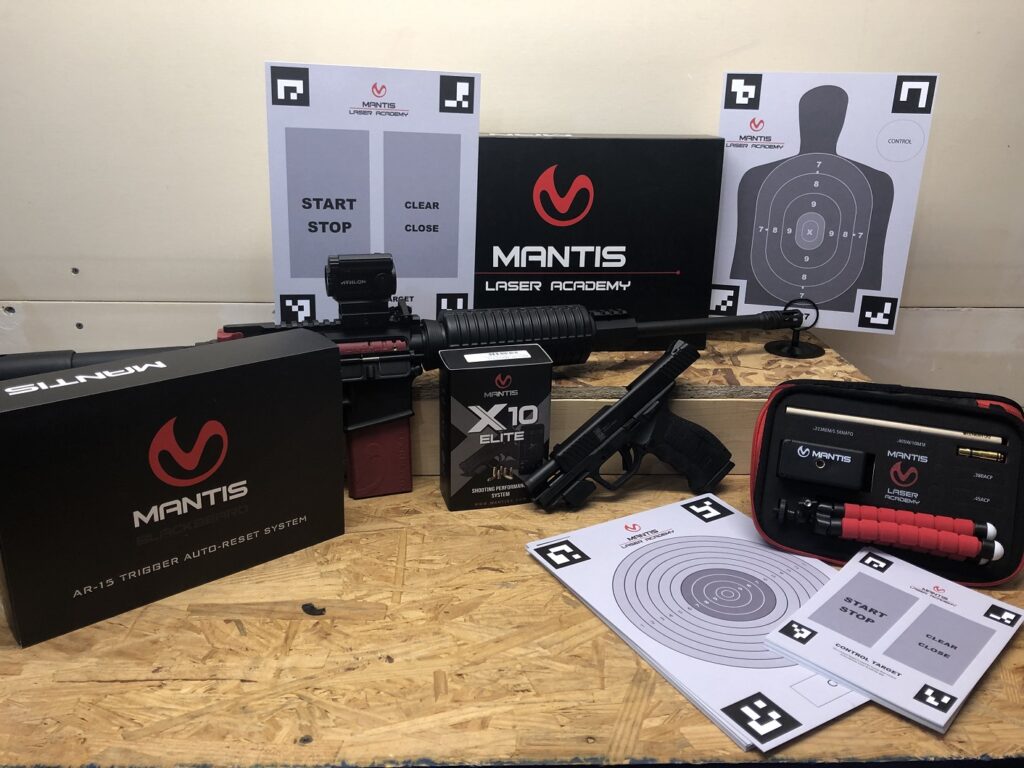
The authors at Tag Soup Adventures may receive free or discounted products to include in reviews or stories on the site. Our content may contain affiliate links that provide a commission to the author(s) when you use them to shop.
I was lucky. I was raised around firearms and learned about them early. I’ve always been pretty confident in my skills, but primarily when it came to long guns. We had hunting rifles and shotguns. We never had handguns.
I got my concealed carry license when I legally could in my state. Then I purchased my first handgun. I educated myself, and I practiced, but my long gun skills didn’t really carry over to handguns like I hoped. I was passable, but far from proficient. My mentor network didn’t have the support I wanted and needed to take my handgun skills to the level I wanted to get them.
That all changed when I found Mantis products.
The Mantis X10
When the COVID pandemic hit, it became really difficult for me to get the range time that I had in the past. We were living in town, shooting at home wasn’t an option, and getting out of the house wasn’t much easier. That’s when I purchased my Mantis X10 Elite.
The Mantis X10 is an awesome little tool that give you immediate feedback on what you’re doing while shooting. The X10 mounts on a picatinny rail on your handgun, rifle, or even bow. The module tracks the motion of the firearm (or bow) and reports it to the MantisX app, where you can view the feedback and scores.
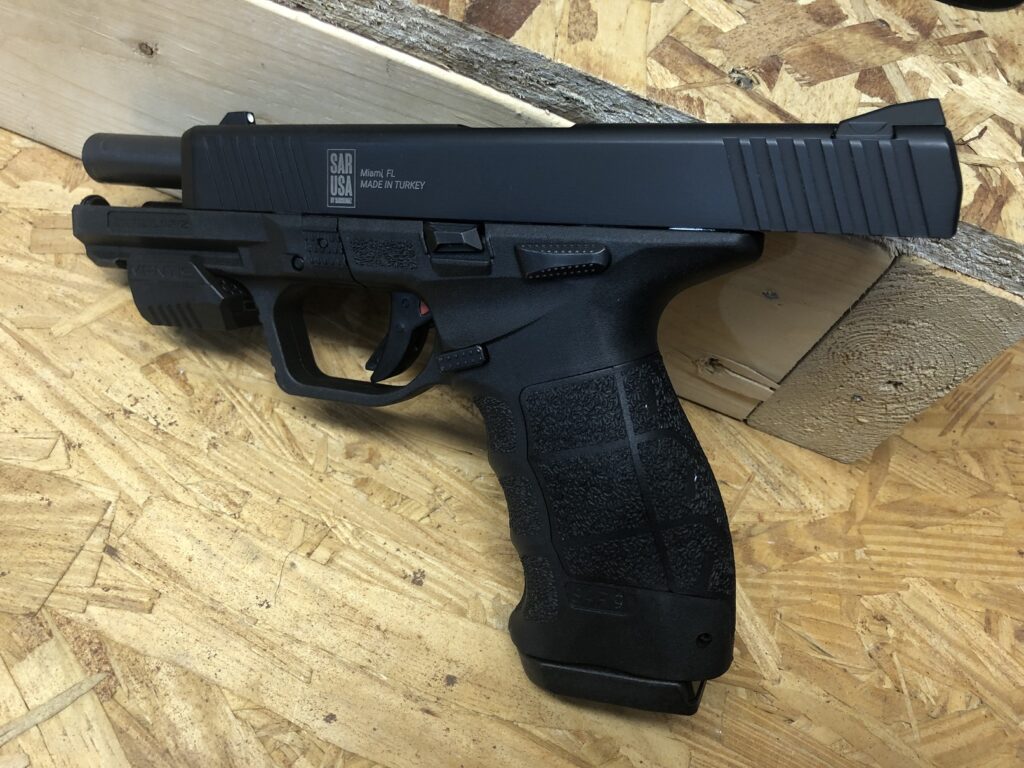
Grip issues, trigger pull issues, follow-through issues. It identifies it and tells you what you’re doing and how to fix it, and does so for both live or dry fire. I was doing this exclusively dry fire, because I was stuck in my suburban home.
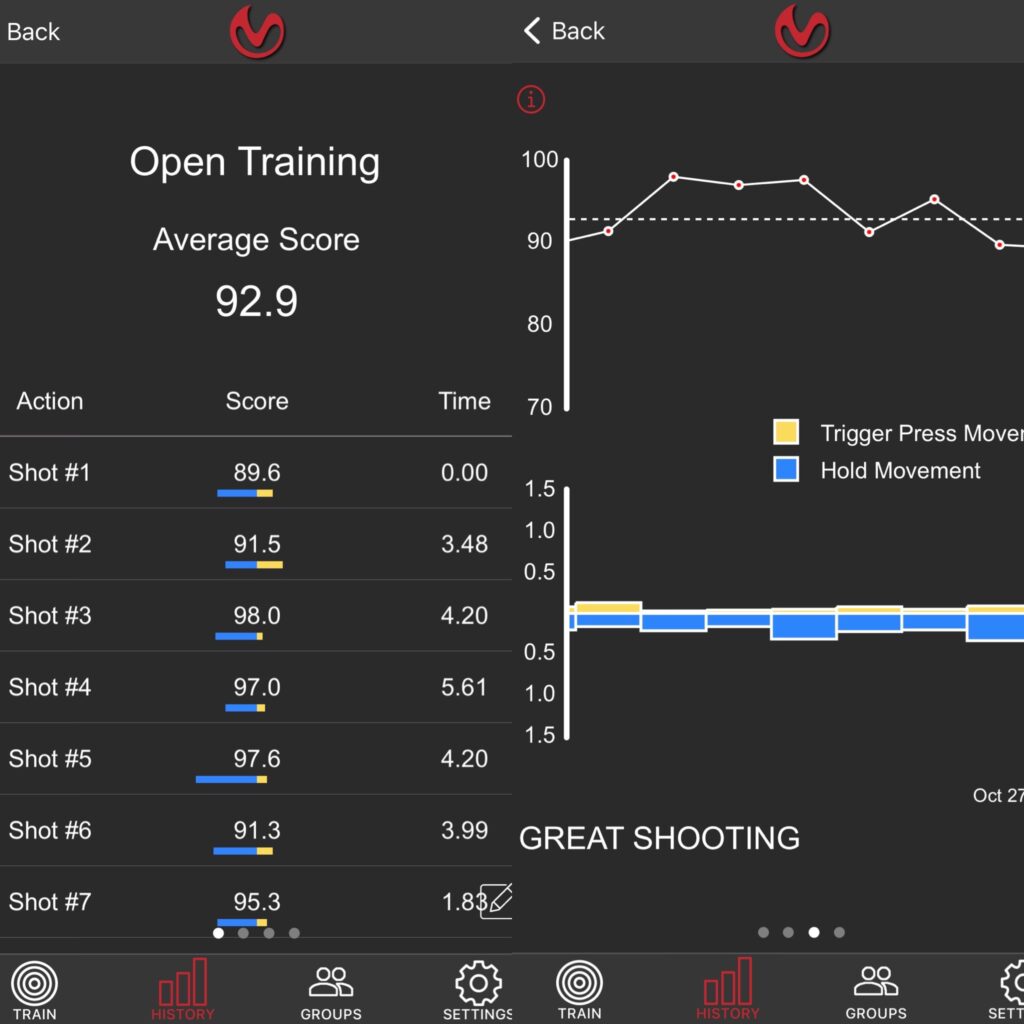
I won’t get into all the details, Mantis is better at doing that anyway, but here’s what I will say. No other shooting drill or tool has ever provided the immediate improvement the Mantis X10 did. Each trigger pull is scored, and if an issue is detected the correction is shared as well. I started seeing my average scores improve immediately. I went from averaging in the mid to upper-60s to upper-80s and low-90s over the course of a few months of dry fire. There were rapid improvements, backslides, and more improvements. It was a fantastic tool to isolate the shooting mistakes that I couldn’t find on my own.
The Proof is in the Pudding
I knew my scores were going up, but I was still just doing dry-fire drills. I didn’t really understand the extent to which my skills had improved until the following summer when I visited the training facility at Black Rain Ordinance in Neosho, Missouri.
We were a group of about 12 being introduced to the laser training system that was used by local law enforcement all the way up to federal officers and ex-military. I felt completely out of my element. We were a mixed group, skill levels varying, but I had pretty low expectations of myself.
Our opening drill on the system was shooting plates. There was a 20-plate grid that populated randomly with eight green, eight red, and four blank spots. The drill was to clear the green plates as fast as possible without a miss or hitting a red plate. We were told anything under 10 seconds was respectable for the general gun public. They want the law enforcement guys under seven.
My first clean run came it at 6.5 seconds. My second was 5.25. Only one clean run came in under my time in our group. The feedback from the instructors? Without “playing the game” daily, or similar training, getting under five seconds is almost impossible.
I already liked my Mantis X10, but that was the day I was sold on just how valuable a training tool it is.
Is Dry-Fire Training Really that Valuable?
I had my own opinion about this question but wanted to consult an expert. In talking about Mantis products with people and seeing discussions about the value of dry-fire training online, I wanted to consult some experts on the subject.
The person I asked was Fred Mastison, the President of Force Options USA. If you pay much attention to, well, any of the media outlets in the shooting sports space you’ve probably seen his name before. Personally, his opinion is one that I value greatly. I had three questions relative to dry-fire training that I wanted to ask.
TM – “Is there value to dry-fire training when there is no recoil or report?”
FM – “Absolutely. Specific points like trigger press and follow through can be developed through dry fire. In fact, dryfire is considered a critical to any serious training regimen.”
TM – “What ratio of dry-to-live do you recommend for someone looking to improve their form or skills?”
FM – “Five to one. I teach people that they need to dry fire every day for at least 10 minutes. Then on the weekend they can hit the range.”
TM – “What’s the most important thing for someone just starting to really focus on training to make a priority during dry fire?”
FM – “I believe the most important thing to start with is a smooth trigger press to avoid jerking the trigger. That is critical as base moving forward.”
Fred’s answers were plain enough for me. He clearly values dry-fire training, regardless of the lack of recoil or report.
Second Opinion
Not one to take just one person’s word for anything, I wanted to get a second opinion. I reached out to Kevin Michalowski. Kevin is the Director of Media for Delta Defense and the Executive Editor of Concealed Carry Magazine, the magazine of the United States Concealed Carry Association. Again, I think it is fair to call Kevin an expert on this subject.
My question to Kevin was simple.
“Is there value in dry-fire training?”
While I couldn’t see Kevin, I could pretty much imagine him sitting back in his chair, trying to gauge what point I was trying to make when I asked. If you knew Kevin, you could imagine this too.
“The value of dry-fire training cannot be overstated. Any training drill that you practice with live ammo can and should be run as a dry-fire drill. This allows you to complete effective repetitions as you perfect the mechanics of shooting without spending money on ammo and dealing with report and recoil,” said Michalowski, with a tone and manner in accordance with his years of experience.
“And consider this,” he continued, pausing to add dramatic effect even though it was just us talking. “All of the elements of effective accuracy happen before the gun fires. Your draw, grip, sight picture, sight alignment and trigger press all happen before the projectile is launched. Dry-fire training allows you to master those elements while getting and keeping the sights on target. You can perfect those elements through repetitive dry-fire training and, when it comes time to fire live rounds you will unconsciously and smoothly complete all the steps that will put you on target.”
Though we were having this conversation at distance, I could almost see him sit back in his chair to cut a piece of apple off with a pocket knife as he finished his thought. Where I grew up, this was how you knew what you just heard was as good as gospel.
Two different experts in the field of shooting, training, and tactics giving remarkably similar answers. There’s a reason I listen to guys like Fred and Kevin and ignore the anonymous keyboard warriors on TwInstaFaceTubeTok.
Dry-fire training isn’t just part of a good training regimen. It is the bedrock.
Mantis Laser Academy
The arrival of the Mantis Laser Academy dovetailed pretty nicely with my experience at the Black Rain training facility. While the Black Rain facility used a video screen and scenarios, a similar but smaller scale (and far more affordable option) can be had for your home. I had to get my hands on it.
The Mantis Laser Academy comes with the laser for your caliber of choice, targets, and the tools you need to setup a laser range right in your own home. Using your phone, you run scored and timed drills to monitor your progress. Each drill has an explanation and directions for how to complete it. There are also marksmanship courses.
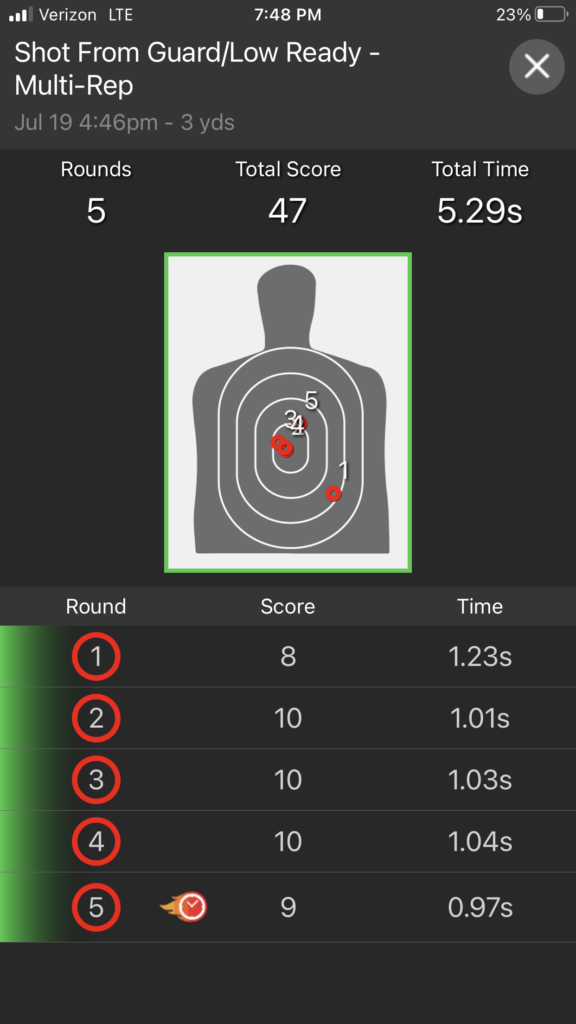
Are they just any target? No. The Laser Academy has specific targets with codes on them that let the app recognize what is in use and score your shots. Targets are available in either 8.5×11 or 5×7. The larger are for use at four yards, half that for the smaller. That said, I routinely go to 7 yards and beyond with the larger targets, as they are my preference.
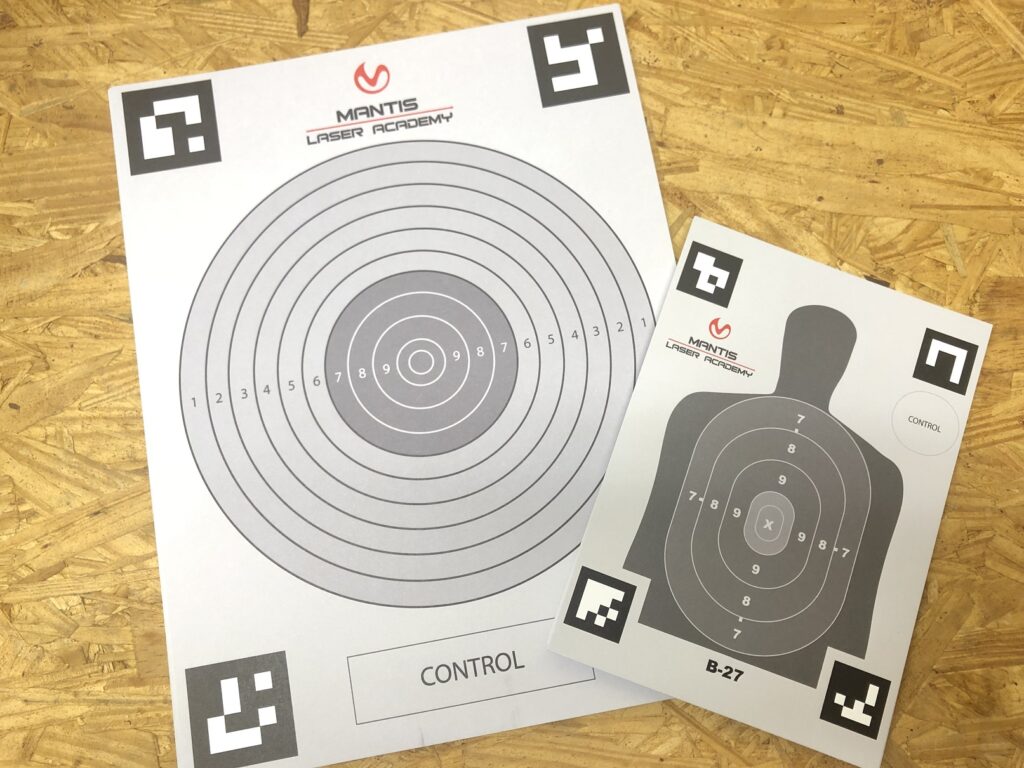
Does Distance Really Matter?
One quick aside. For years bowhunters have been hearing they should start practicing at longer ranges to make closer shots seem easier. This thought has bled over into rifles, and to some extent pistol shooting as well. While there is a place for this, you can achieve a similar objective by shooting closer ranges at a smaller target. This precision practice could be shooting smaller dots with a bow, or an air rifle at smaller targets at 20 yards. Similarly, you can move back on a small target, or use a small target at four yards, to make a passing shot harder to achieve. It still requires precision, but you can do it in a smaller area.
You end up achieving the same thing. Going to a long distance will give the projectile more time to complete a travel that is deemed unacceptable. At shorter distances, the acceptable path to the target is more critical if the target is smaller than it would usually be. In both scenarios, the focus is precision.
Dry-Fire Training and Ammunition
The price of ammunition being what it is, this type of training is more valuable than ever. Personally, in the week that I am writing this, I have put almost 1,000 laser rounds downrange. That alone would be no less than $300 of ammunition, assuming I can even find it. Doing the math of how many shots can be taken, the volume of training you can do, the Mantis Laser Academy is an invaluable tool.
Why else do I love the Mantis Laser Academy?
- No partner necessary – Running timed drills can be hard to do by yourself just from a logistics standpoint. When you factor in wanting another set of eyes to help find the issues in your form or training, shooting alone is often just that, shooting. When you want to train, you need more eyes to provide feedback. Mantis is that set of eyes.
- Variety – We are a species prone to getting comfortable. We make the same 10 things for supper. We go to the gym and do the same six workouts. The same is true of going to the range. Mantis having a roster of drills keeps you wanting to explore.
- It’s just a starting point – The drills as presented in the Mantis Laser Academy app are just a starting point. For instance, the holster draw drill can be done standing in front of the target at four yards, waiting for the start signal. There is nothing that stops you from standing with your back to the target. You could start the drill from cover. You can build on the base drill to include additional actions or movement that challenge you as your skills evolve.
- Compatibility with Mantis Blackbeard – What is the Mantis Blackbeard? Glad you asked!
Mantis Blackbeard
The Mantis Blackbeard is an auto-resetting training aid for your AR platform rifle. Simply remove the charging handle and bolt carrier group, install the laser module, and then install the battery pack instead of a magazine. You’re now holding your AR, with your trigger, optics, and accessories, that is capable of semi-auto laser fire. All alone, this makes close-quarter combat AR training easier (and more affordable) than ever.
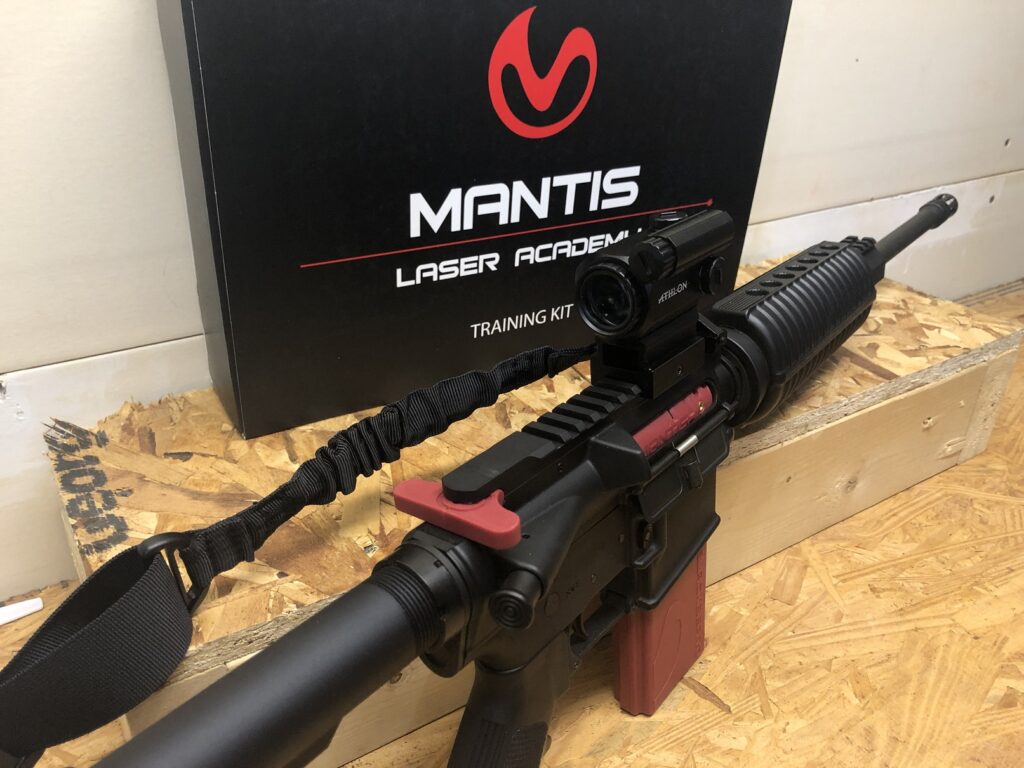
Pair it with Laser Academy, and you have even more training options.
I am loving the “shot from guard/low ready.” I can run hundreds of repetitions, bringing the rifle up, getting on my optic, acquiring the target, and firing an accurate shot. I am developing muscle memory and clean mechanics that would cost thousands of dollars of range time and ammunition to replicate without laser and dry-fire training.
Are There Negatives?
Nothing is perfect. That said, I can’t think of a product off the top of my head that is closer than the Mantis suite of dry-fire and laser training products. Are there some things I would change? Sure.
Here they are:
- Par Times – A few of the drills have a par time, or a benchmark you are working against. Many do not. To me this cuts both ways. I understand not wanting to set a time that once people get to, they get complacent. On the flip side, I am the type of person that likes to have something to work towards. Currently, I’ve been doing a lot of the emergency reload drill. On average I am able to eject the mag, load a new mag, and get a shot off somewhere in the neighborhood of three seconds and change. My fastest? Two and a half seconds. That time is good for me, but where does that rank globally? I would like graduated par scores or times. In this instance, maybe it would be something like: >5 seconds – failing, 4-4.99 seconds – acceptable, 3-3.99 – proficient, 2-2.99 – expert. Maybe that’s nowhere close to what it should be, but I would like a little more context in the drills I am doing to know what my progress means in the larger shooting world.
- Optional Firearm Selection – In the MantisX, where your shots are scored for proper form, you have to select what firearm you are using. In laser academy, you’re just shooting lasers. So, if I do shot from low guard/ready with my Mossberg MC2C, and then do it again with my AR, I have no way of knowing which was used unless I keep a log of those actions. Similarly, with something like the emergency reload drill, if I can compare reload times with my EDC gun, to another, I may want to consider swapping my EDC if I can’t improve my times relative to another pistol I own.
Conclusion
There is a lot to unpack here. Reviews and guides to products can be cumbersome when it covers one product, while here I covered three. While any of the Mantis products mentioned here are great on their own, they reach their full potential when used as a group. Becoming a proficient shot with a pistol takes a lot of time and spent brass. It is also very difficult without someone around to help guide your training and find your mistakes.
The plain reality is over the last few years we’ve seen a huge boom in first-time gun owners. I’ve seen a tremendous number of gun owners express the willingness to go to the range, help find a gun that fits them, introduce new gun owners to safe gun ownership, and understand what it means to be a responsible gun owner. But even as a responsible gun owner, I need tools and resources to continue my training.
In almost three decades of gun ownership I’ve not seen better products to address all aspects of a training regimen. I’ve made more progress in the last two-plus years of training with my Mantis products than the decade before that. I’ve shot fewer live rounds, but seen my live round training improve. I am more confident in my skills and gun handling that I have ever been.
I’ve done this training on my own, in the comfort of my own home.
Serious about making yourself a better, more accurate shooter? Get a Mantis.
Curious about training, drills, and building skills? Get a Mantis.
Want to save money, and be more productive with every trigger pull? Get a Mantis.
I love my Mantis products.